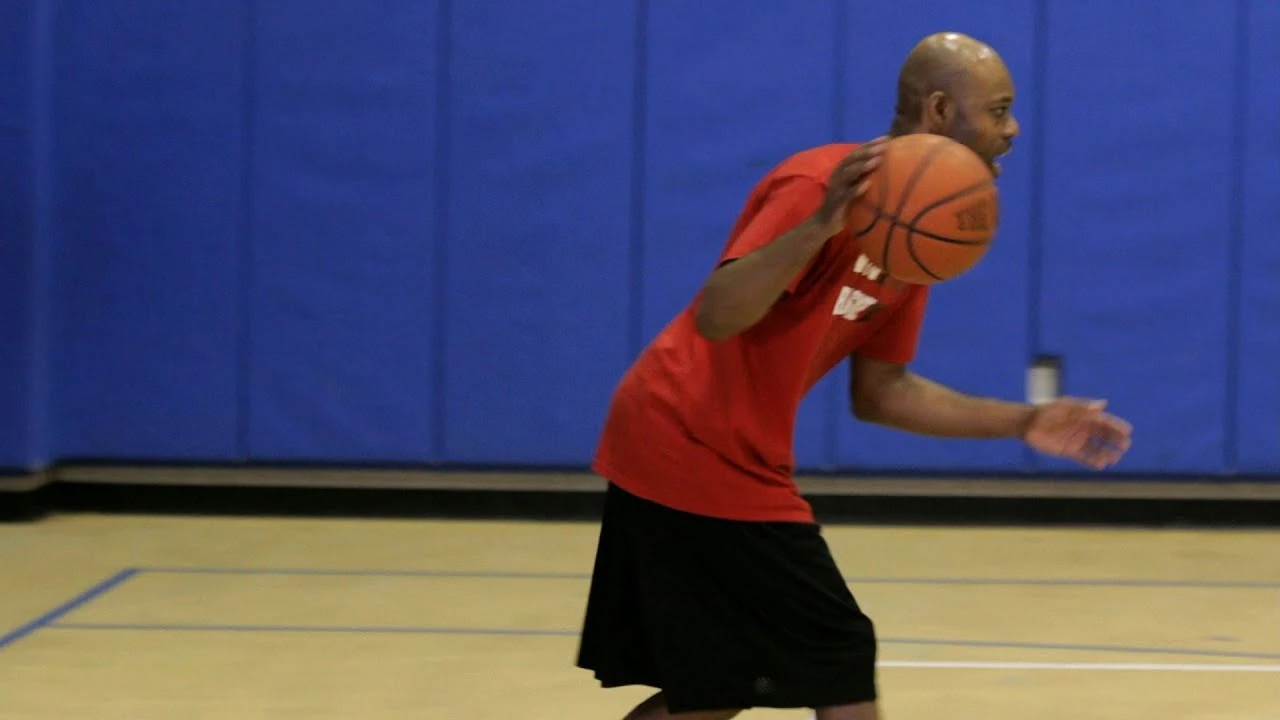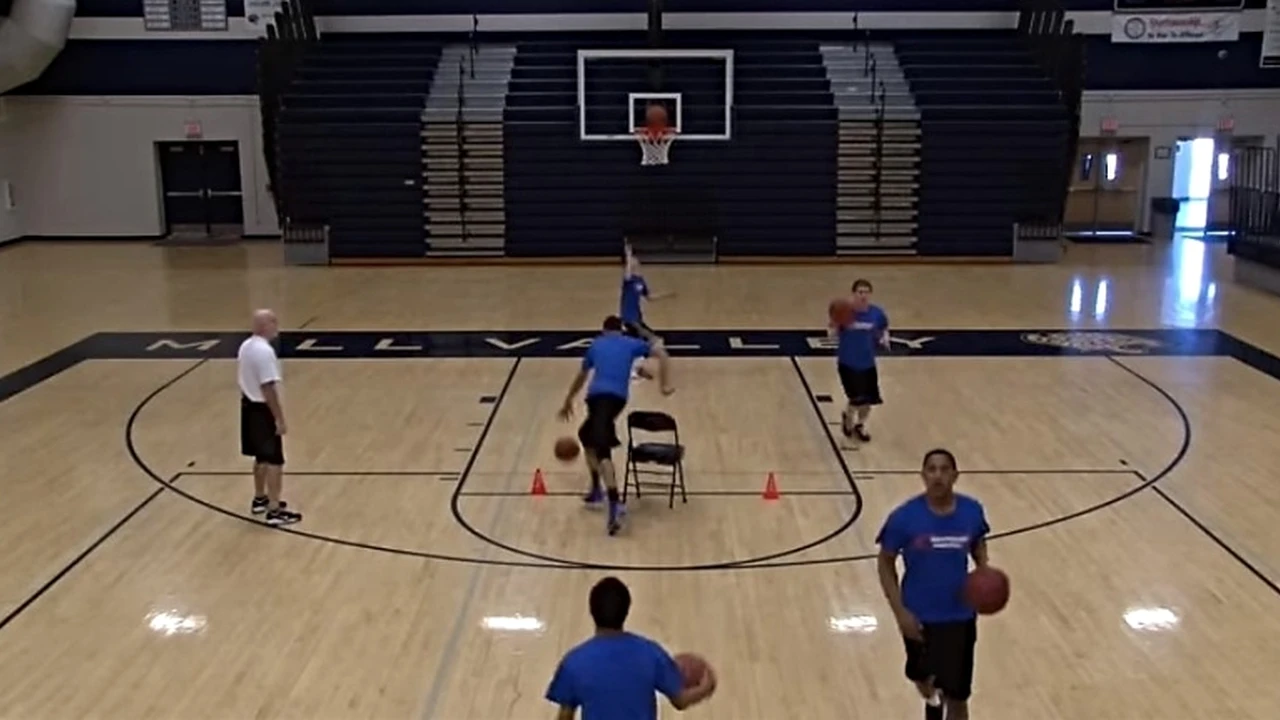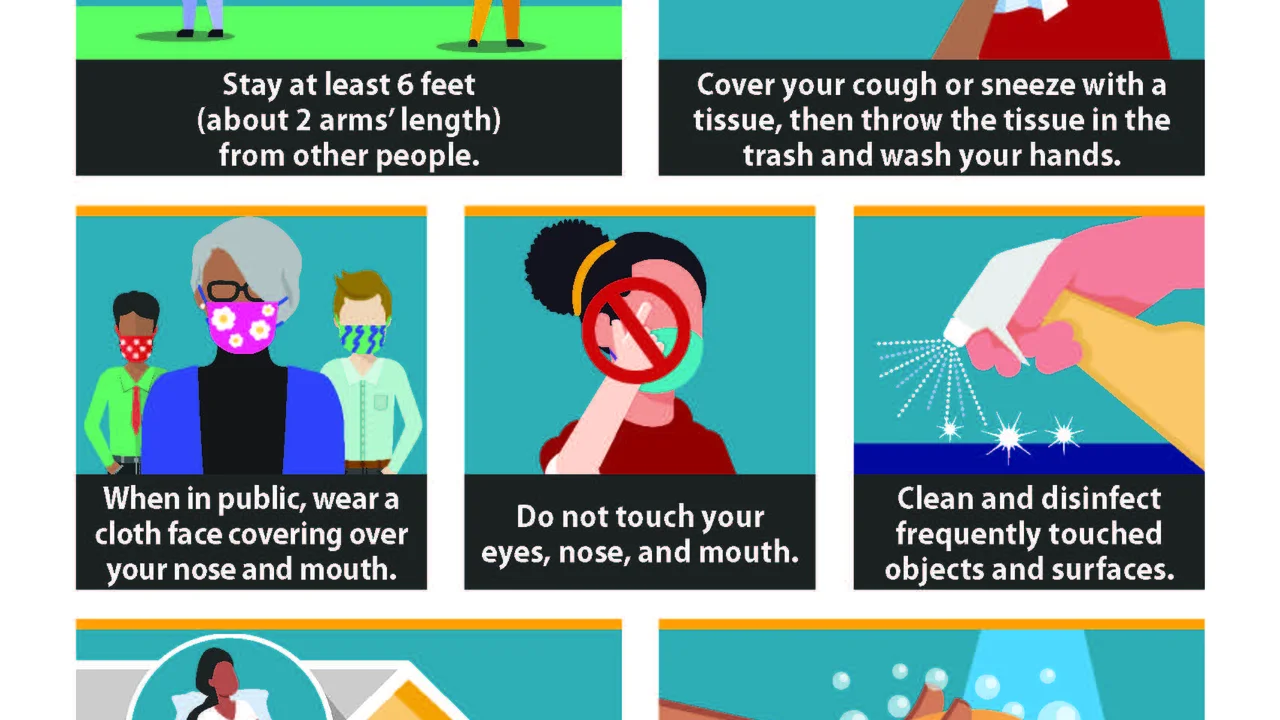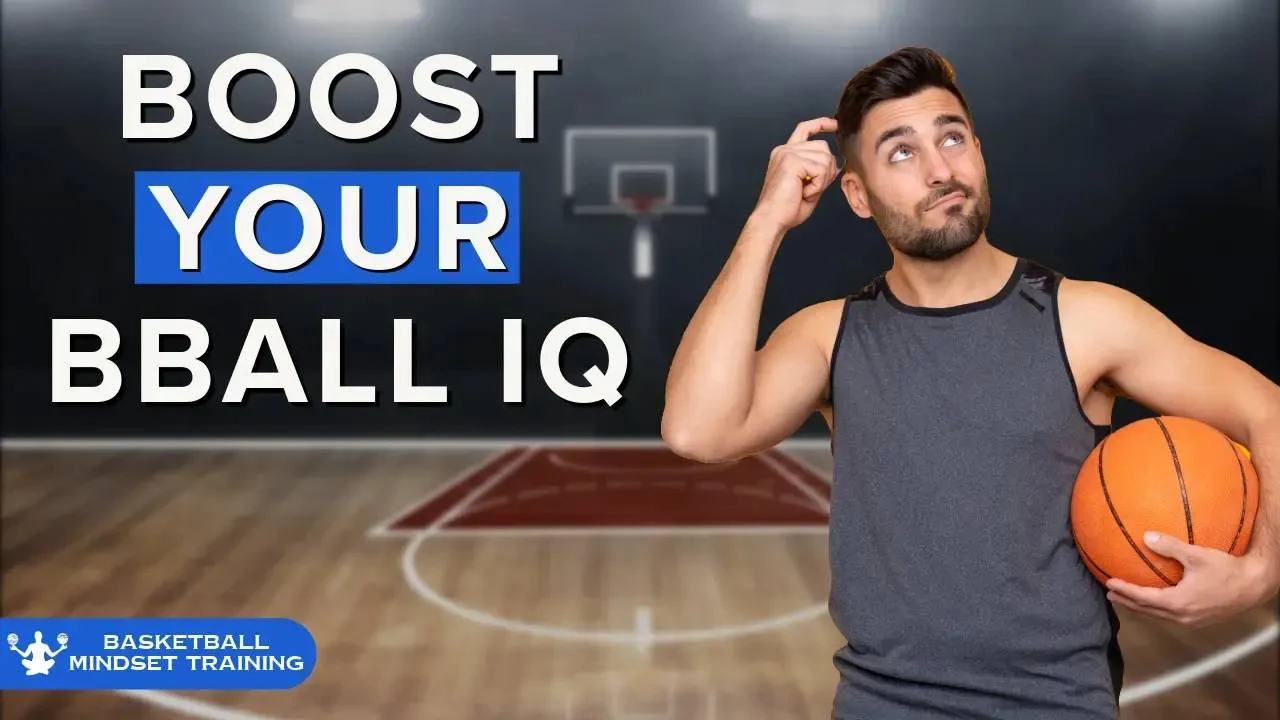Defensive Communication_ Talking on the Court
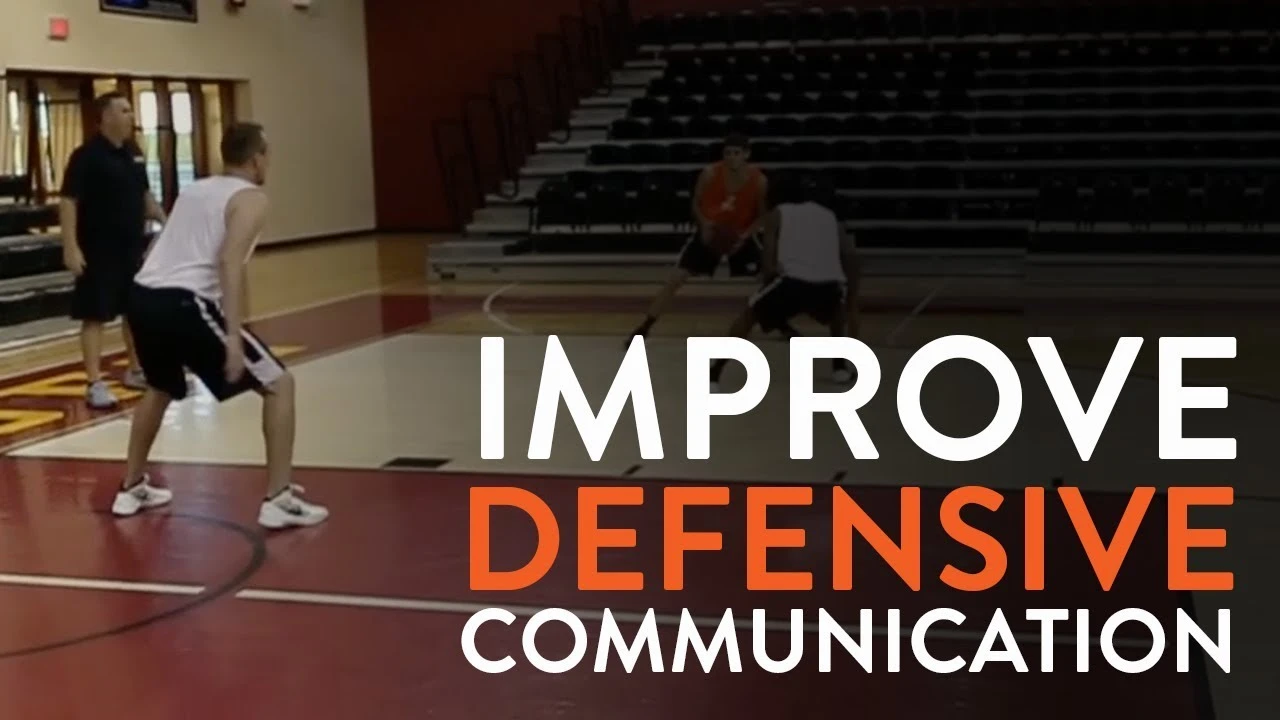
Understanding Court Awareness The Foundation of Defensive Prowess
Court awareness isn't just about knowing where the ball is; it's about understanding the positioning of your teammates, the opposing players, and the overall flow of the game. It's the bedrock upon which all defensive strategies are built. Without a strong sense of court awareness, even the most athletically gifted player will struggle to make effective defensive plays.
Think of it as having a constant mental map of the court. This map isn't static; it's constantly updating based on the actions of everyone involved. You need to be able to anticipate where the ball is going, where players are likely to move, and what potential passing lanes might open up.
Developing court awareness takes time and practice. It's not something you can learn overnight. But with dedicated effort, you can significantly improve your ability to read the game and make smarter defensive decisions.
Developing Peripheral Vision Enhancing Your Court Coverage
Peripheral vision is a critical component of court awareness. It allows you to see more of the court without having to constantly turn your head. This is especially important when you're guarding an opponent or trying to anticipate a pass.
Imagine you're guarding a player on the wing. If you're only focused on the ball, you're likely to lose track of your opponent. They could easily cut to the basket or slip behind you for an open shot. But if you can use your peripheral vision to keep an eye on both the ball and your opponent, you'll be much better equipped to react to their movements.
There are several exercises you can do to improve your peripheral vision. One simple technique is to focus on a point straight ahead while trying to be aware of objects on either side of you. You can also practice dribbling a basketball while keeping your head up and scanning the court.
Anticipating Opponent Movements Reading Body Language and Patterns
Anticipation is the ability to predict what an opponent is going to do before they actually do it. This is a valuable skill for any defensive player. By anticipating your opponent's movements, you can position yourself to intercept passes, block shots, and force turnovers.
One of the keys to anticipation is reading body language. Pay attention to the way your opponent is holding the ball, the direction they're looking, and the way they're shifting their weight. These subtle cues can often give you a clue about their intentions.
For example, if an opponent is holding the ball high and looking towards the basket, they're likely thinking about shooting. If they're dribbling with their head down and their shoulders hunched, they might be looking to drive to the basket. By recognizing these patterns, you can react accordingly.
Defensive Positioning Mastering Angles and Spacing
Proper defensive positioning is essential for preventing your opponent from scoring. This involves understanding angles, spacing, and the importance of staying between your opponent and the basket.
The basic principle of defensive positioning is to stay between your opponent and the basket. This forces them to take a more difficult shot or pass, and it gives you a better chance to contest their attempt. You should also maintain a proper distance from your opponent. If you're too close, they can easily drive past you. If you're too far away, they'll have an open shot.
The ideal distance will vary depending on the opponent's skill set. If they're a good shooter, you'll need to stay closer to contest their shot. If they're a good driver, you'll need to give them a little more space to avoid getting beat.
Understanding Rotation Schemes Team Defense and Help Side Positioning
Defensive rotations are a crucial aspect of team defense. They involve players shifting their positions to cover for teammates who are out of position or who have been beaten by their opponent. Effective rotations require good communication, anticipation, and a willingness to help out your teammates.
One common rotation scheme is the help side rotation. This occurs when a player is beaten off the dribble. The nearest teammate on the help side will rotate over to provide help defense, while the other teammates adjust their positions to cover the open areas.
The key to successful rotations is communication. Players need to be able to quickly and clearly communicate who is rotating where. This allows the team to stay organized and prevent easy scoring opportunities.
Defensive Drills Enhancing Reaction Time and Agility
Defensive drills are a great way to improve your reaction time, agility, and overall defensive skills. These drills can help you develop the muscle memory and instincts you need to make quick decisions on the court.
One popular drill is the shuffle drill. This involves shuffling laterally back and forth across the court, staying low to the ground and maintaining a defensive stance. This drill helps improve your lateral movement and agility.
Another effective drill is the reaction drill. This involves a coach pointing in different directions, and the player reacting as quickly as possible by shuffling in that direction. This drill helps improve your reaction time and footwork.
Analyzing Game Film Identifying Weaknesses and Strengths
Analyzing game film is a valuable tool for improving your defensive game. By watching yourself play, you can identify areas where you need to improve and areas where you're already strong.
When watching game film, pay attention to your positioning, your reaction time, and your communication. Are you consistently in the right place at the right time? Are you reacting quickly to your opponent's movements? Are you communicating effectively with your teammates?
You can also use game film to study your opponents. Watch how they move, what their tendencies are, and what their weaknesses are. This information can help you develop a game plan for guarding them.
Recommended Products for Enhanced Defensive Performance
To further enhance your defensive abilities, consider incorporating these products into your training regimen. We'll explore specific use cases, comparisons, and detailed information, including pricing, to help you make informed decisions.
Agility Cones Boost Footwork and Quickness
Agility cones are versatile tools for improving footwork, agility, and reaction time. They can be used to create a variety of drills that challenge your ability to change direction quickly and efficiently.
Use Cases:
- Lateral Shuffle Drills: Set up a line of cones and shuffle laterally between them, focusing on staying low to the ground and maintaining a defensive stance.
- Cone Weaving Drills: Weave in and out of the cones, practicing quick cuts and changes of direction.
- Reaction Drills: Have a coach call out a cone number, and react as quickly as possible by sprinting to that cone.
Product Comparison:
- Champion Sports Agility Cones: Durable and affordable, these cones are a great option for basic agility training. (Price: ~$15 for a set of 50)
- SKLZ Agility Cones: Made from high-quality materials, these cones are more durable and resistant to cracking. (Price: ~$25 for a set of 20)
- Yes4All Agility Cones: A budget-friendly option that still provides adequate durability for most training purposes. (Price: ~$10 for a set of 50)
Detailed Information:
When choosing agility cones, consider the material, size, and quantity. Look for cones made from durable plastic that can withstand repeated use. The standard size is around 9 inches, but smaller cones are also available. The number of cones you need will depend on the types of drills you plan to do.
Resistance Bands Increase Strength and Explosiveness
Resistance bands are a valuable tool for building strength, power, and explosiveness. They can be used to add resistance to a variety of exercises, helping you develop the muscles you need to be a more effective defensive player.
Use Cases:
- Lateral Band Walks: Place a resistance band around your ankles and walk laterally, focusing on keeping your core engaged and maintaining a stable base.
- Glute Bridges with Band: Perform glute bridges with a resistance band around your thighs to activate your glutes and hamstrings.
- Squats with Band: Add a resistance band above your knees during squats to increase the challenge and improve your hip stability.
Product Comparison:
- TheraBand Resistance Bands: A popular choice for physical therapy and general fitness, TheraBands offer a variety of resistance levels. (Price: ~$10-15 per band)
- Serious Steel Fitness Resistance Bands: Known for their durability and high resistance levels, these bands are ideal for athletes looking to build serious strength. (Price: ~$20-30 per band)
- Fit Simplify Resistance Loop Exercise Bands: A set of loop bands with varying resistance levels, perfect for targeting different muscle groups. (Price: ~$10-15 for a set of 5)
Detailed Information:
When choosing resistance bands, consider the resistance level, material, and size. Look for bands made from durable latex or rubber that can withstand repeated stretching. The resistance level should be challenging but not so difficult that you can't maintain proper form.
Reaction Balls Improve Hand-Eye Coordination and Reflexes
Reaction balls are designed to bounce unpredictably, forcing you to react quickly and improve your hand-eye coordination and reflexes. They are a fun and effective way to train your defensive instincts.
Use Cases:
- Wall Ball Drills: Throw the reaction ball against a wall and react to the unpredictable bounces.
- Partner Drills: Toss the reaction ball to a partner and have them react to the bounces.
- Ground Ball Drills: Drop the reaction ball on the ground and react to the bounces.
Product Comparison:
- SKLZ Reaction Ball: A durable and well-designed reaction ball with an unpredictable bounce. (Price: ~$15)
- Franklin Sports Reaction Ball: A more affordable option that still provides a challenging and unpredictable bounce. (Price: ~$10)
- Champion Sports Reaction Ball: A solid option for beginners, offering a good balance of durability and affordability. (Price: ~$8)
Detailed Information:
When choosing a reaction ball, consider the size, material, and bounce. Look for a ball that is easy to grip and that has an unpredictable bounce. The size of the ball will depend on your personal preference.
Weighted Vests Enhance Strength and Endurance
Weighted vests add resistance to your workouts, helping you build strength, endurance, and explosiveness. They can be used during a variety of exercises, including running, jumping, and agility drills.
Use Cases:
- Running Drills: Wear a weighted vest during sprints and distance runs to increase the challenge and improve your endurance.
- Jumping Drills: Wear a weighted vest during jump squats, box jumps, and other jumping drills to increase your power and explosiveness.
- Agility Drills: Wear a weighted vest during agility drills to increase the challenge and improve your footwork and quickness.
Product Comparison:
- Hyperwear Hyper Vest PRO: A comfortable and adjustable weighted vest that is designed for high-intensity workouts. (Price: ~$200)
- RUNFast/Max Adjustable Weighted Vest: A more affordable option that still provides a good level of comfort and adjustability. (Price: ~$80)
- CAP Barbell Adjustable Weighted Vest: A durable and versatile weighted vest that is suitable for a variety of exercises. (Price: ~$60)
Detailed Information:
When choosing a weighted vest, consider the weight, adjustability, and comfort. Look for a vest that is adjustable so you can gradually increase the weight as you get stronger. The vest should also be comfortable to wear and should not restrict your movement.
Jump Ropes Improve Footwork and Coordination
Jump ropes are an excellent tool for improving footwork, coordination, and cardiovascular fitness. They are a simple and effective way to warm up before practice or to add a challenging workout to your routine.
Use Cases:
- Basic Jumping: Practice basic jumping techniques, such as jumping with both feet, alternating feet, and jumping on one foot.
- Speed Jumping: Focus on jumping as quickly as possible, maintaining a consistent rhythm and keeping your feet close to the ground.
- Crossover Jumps: Cross your arms while jumping to improve your coordination and agility.
Product Comparison:
- Survival and Cross Jump Rope: A high-quality speed rope that is designed for fast and efficient jumping. (Price: ~$20)
- DEGOL Skipping Rope: A durable and adjustable jump rope that is suitable for a variety of fitness levels. (Price: ~$15)
- King Athletic Jump Rope: A budget-friendly option that still provides a good level of performance and durability. (Price: ~$10)
Detailed Information:
When choosing a jump rope, consider the material, length, and handles. Look for a rope that is made from durable materials, such as PVC or steel. The length of the rope should be appropriate for your height. The handles should be comfortable to grip and should allow you to rotate the rope smoothly.
Implementing Defensive Strategies in Game Situations
All the training and preparation in the world won't matter if you can't effectively implement defensive strategies in game situations. This requires a combination of skill, awareness, and mental toughness.
Focus on staying disciplined, communicating with your teammates, and anticipating your opponent's moves. Don't be afraid to take risks, but always be mindful of your responsibilities. Remember that defense is a team effort, and the more you work together, the more successful you'll be.
Maintaining Mental Focus and Resilience Under Pressure
Defense often comes down to mental toughness. You need to be able to stay focused and resilient, even when you're facing adversity. This means being able to shake off mistakes, stay positive, and continue to compete at a high level.
Develop mental strategies for dealing with pressure. Practice visualization, positive self-talk, and mindfulness techniques. These tools can help you stay calm and focused in stressful situations.
Continuous Improvement Analyzing Performance and Adapting Strategies
Defensive skills are not static. They require continuous improvement and adaptation. Regularly analyze your performance, identify areas where you can improve, and adjust your strategies accordingly.
Seek feedback from coaches and teammates. Watch game film to identify your weaknesses and strengths. Stay up-to-date on the latest defensive techniques and strategies. By constantly learning and adapting, you can continue to improve your defensive game and become a more valuable asset to your team.
:max_bytes(150000):strip_icc()/277019-baked-pork-chops-with-cream-of-mushroom-soup-DDMFS-beauty-4x3-BG-7505-5762b731cf30447d9cbbbbbf387beafa.jpg)



